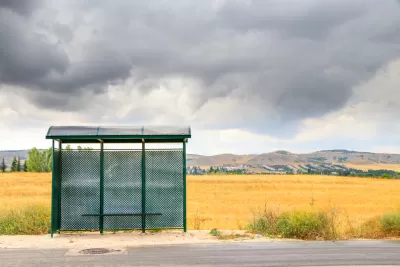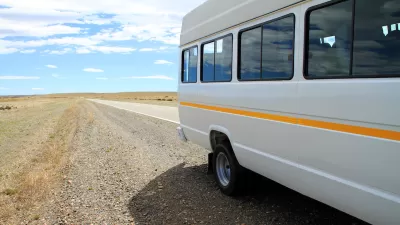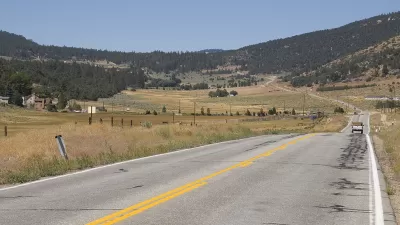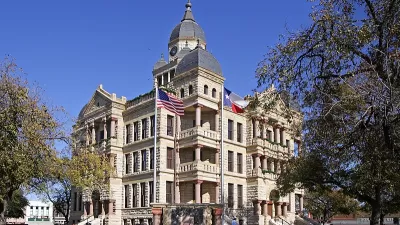With limited resources and dispersed service areas, rural transit systems are turning to technology to provide on-demand service and improve transit options for residents.

"Good public transportation in any city is a lifeline for accessing jobs, healthcare and education." But "While some assume everyone in rural America owns a car, most counties with high rates of zero-car households are actually rural ones," write Scott James Matheson and Sam Couvillon. "[M]ost rural areas have been cut off from access to effective public transportation for years. But that is starting to change thanks to new transit innovations that rural communities are putting in place, a welcome trend that federal infrastructure dollars could accelerate."
Matheson and Couvillon, both mayors of small Georgia towns, say "Public transit has always looked different in communities like ours," with needs that fixed-route bus systems and trains can't meet as efficiently as in big cities.
But there is another, game-changing approach, write Matheson and Couvillon. "We’re using technology to run our own on-demand transit services that are efficient and are drastically expanding access to affordable, convenient and reliable transit. We launched these innovative transit services in a matter of months — not years or decades — by focusing on outcomes for who we want to serve and embracing new ways that get us there."
Valdosta, where Matheson is mayor, launched an on-demand public transit service that has received over 14,000 ride requests per month. Gainesville, the city where Couvillon serves as mayor, "launched WeGo to replace three underperforming fixed routes and immediately saw dramatic improvements," quickly expanding the program to the entire county.
We recently noted a similar argument for the potential of small and rural transit systems to lead the way in electrification. As the authors of this article note, there's an advantage to not having to wait decades for massive, resource-intensive projects. Using technology and on-demand services, "We can deliver transformative, game-changing transit service in a way that is efficient, flexible and adaptable to a community’s mobility needs."
FULL STORY: What big cities can learn from the rural US about public transit

Study: Maui’s Plan to Convert Vacation Rentals to Long-Term Housing Could Cause Nearly $1 Billion Economic Loss
The plan would reduce visitor accommodation by 25,% resulting in 1,900 jobs lost.

North Texas Transit Leaders Tout Benefits of TOD for Growing Region
At a summit focused on transit-oriented development, policymakers discussed how North Texas’ expanded light rail system can serve as a tool for economic growth.

Why Should We Subsidize Public Transportation?
Many public transit agencies face financial stress due to rising costs, declining fare revenue, and declining subsidies. Transit advocates must provide a strong business case for increasing public transit funding.

How to Make US Trains Faster
Changes to boarding platforms and a switch to electric trains could improve U.S. passenger rail service without the added cost of high-speed rail.

Columbia’s Revitalized ‘Loop’ Is a Hub for Local Entrepreneurs
A focus on small businesses is helping a commercial corridor in Columbia, Missouri thrive.

Invasive Insect Threatens Minnesota’s Ash Forests
The Emerald Ash Borer is a rapidly spreading invasive pest threatening Minnesota’s ash trees, and homeowners are encouraged to plant diverse replacement species, avoid moving ash firewood, and monitor for signs of infestation.
Urban Design for Planners 1: Software Tools
This six-course series explores essential urban design concepts using open source software and equips planners with the tools they need to participate fully in the urban design process.
Planning for Universal Design
Learn the tools for implementing Universal Design in planning regulations.
Ascent Environmental
Borough of Carlisle
Institute for Housing and Urban Development Studies (IHS)
City of Grandview
Harvard GSD Executive Education
Toledo-Lucas County Plan Commissions
Salt Lake City
NYU Wagner Graduate School of Public Service





























